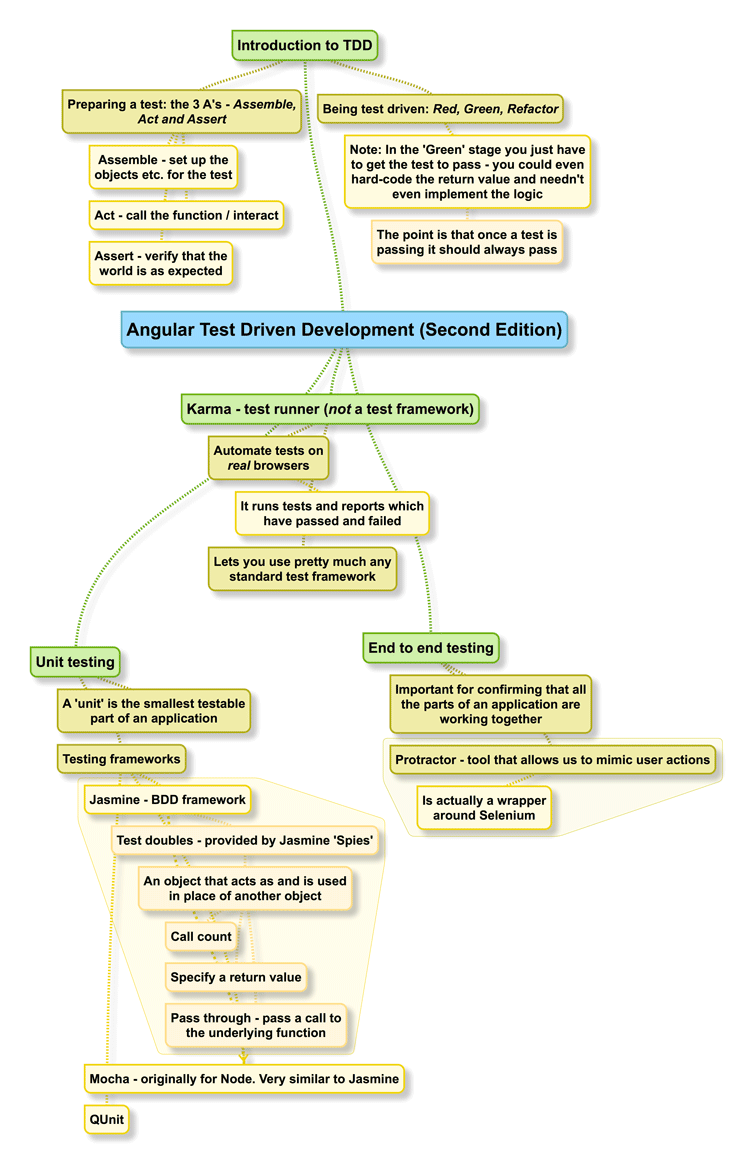Testing Angular: a brief overview
I’ve just finished a short exploration of the tools and techniques for testing Angular (I’m referring to the more modern Angular framework here, not the older AngularJS). Below you’ll find an overview diagram and a few key highlights.
TL;DR
- Testing Angular is much, much more logical than testing AngularJS.
- There are many assertion frameworks to choose from when using Angular. Jasmine seems most popular and I can’t honestly see why you’d use anything else.
- Use Karma for running your tests.
- Protractor is a very capable way of performing end-to-end (e2e) tests in Angular (it’s actually a wrapper around WebDriver)
- A solid testing environment is provided when generating projects using the Angular CLI. Use that if you can.
Overview diagram
Testing architecture
One of the things that can be most confusing about JavaScript testing to aside from all the asynchronous stuff to is the number of tools involved.
- Unit testing:
- You write your unit tests is an assertion library (like Mocha, QUnit or Jasmine). An assertion library may also provide advanced tools such as spies and stubs (a topic for another post but they’re really well introduced in Chapter 9 of Node.js in Action). Choose one to Jasmine seems a good bet.
- tests with a test runner (more on this below)
- End-to-end (e2e) provides the ability to test the application as your user sees it:
- Protractor seems to be the end-to-end (e2e) testing framework for Angular. It’s built upon WebDriver.
If you’ve got experience with PHPUnit and QUnit, you might find the need for a separate test runner a little odd to isn’t that was what the test framework does? This is a single responsibility principle thing:
Remember that Karma is a test runner, not a test framework. Its job is to run tests and report which tests will pass or fail.
It seems this specialisation provides three main benefits:
- it’s agnostic to you can use your preferred TDD or BDD framework
- the ability to test across multiple _real _browsers and devices, apparently
- easy integration with CI (which is great) and IDEs (which is nice)
Useful resources
- If you’ve got a week or so (of evenings and weekend days) read Angular Test Driven Development (Second Edition) by Md. Ziaul Haq
- If you’ve got a couple of days then get familiar with the Angular testing documentation (you should do this anyway)
- If you’ve got a day read Gerard Sans’ Google Developer Experts Angular Testing Guide to and be sure to look at the examples
- If you’ve got only an hour then review Gerard Sans’ slide deck from ngStockholm
